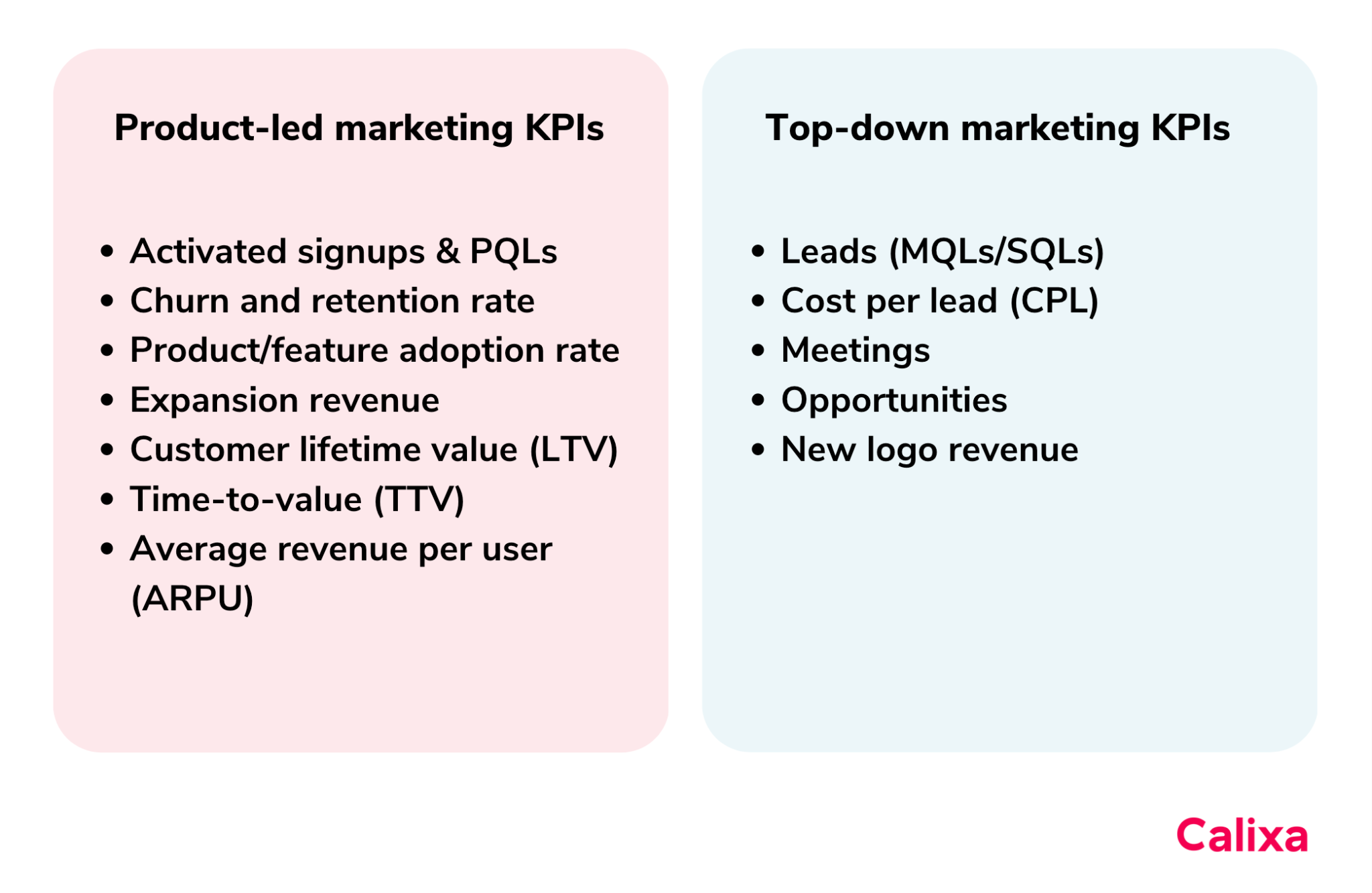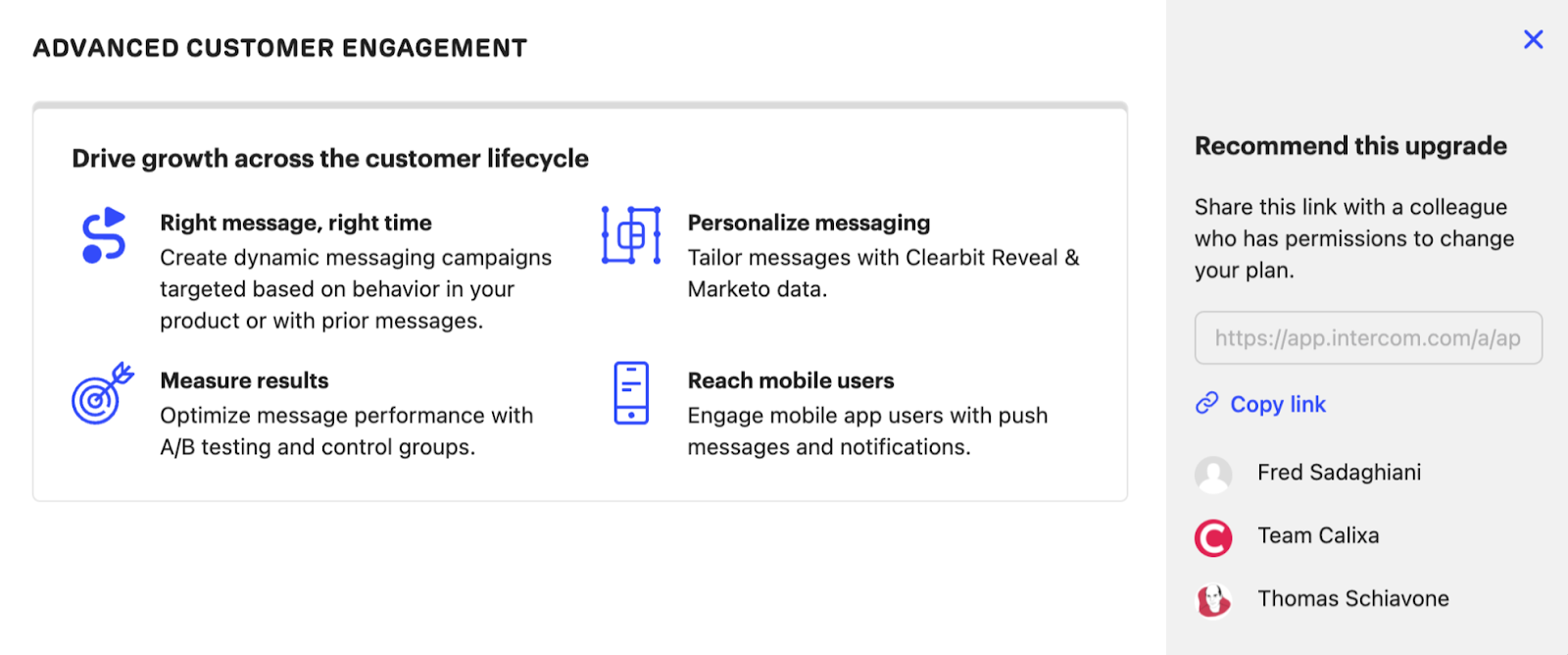Let’s be honest. In the past, marketing hasn’t had a significant role in much outside of acquisition. 🤷🏻♀️
It wasn’t their fault. Marketers often had KPIs that focus on new leads and logos, not renewals or expansion. Yet with product-led that’s quickly changing.
Shanee Ben-Zur, Chief Marketing & Growth Officer at Crunchbase recently shared, “In a product-led world, marketing teams must change their perspective from traditional demand generation like webinars and ebooks to being the connective tissue between product and customer teams. Helping product understand what UX changes are necessary, aligning lifecycle campaigns to the in-product experience, and aligning demand generation to usage data.”
Just as salespeople now put more focus towards the “land and expand” and a consultative approach, marketers too are moving away from pure top of funnel lead gen tactics. Roles within marketing such as growth, demand gen, and lifecycle marketing are now tasked with deepening product adoption and increasing active users. Going back to Shanee:
“Traditionally it’s all about the land. But in PLG, this concept is flipped on its head. The land may be small, but the potential for expansion is where the revenue really comes from.”
This blog covers how marketing can run campaigns based on product usage data to drive expansion deals. We’ll share a general overview of product-led marketing and then showcase real-world examples.
Note: we refer to the traditional approach to marketing as “top-down marketing”, while “product-led marketing” is the same as bottom-up marketing.
💡 Product-led marketing vs top-down marketing
Before diving into tactics, let’s get a high-level understanding of these two approaches. Product-led marketing is suited for self-serve or hybrid sales motions, while top-down marketing fits the top-down sales motion. But they’re not mutually exclusive – the same company can run multiple GTM motions.
So what are the major differences between the two?
🙋 Users vs leads
Product-led marketers understand the value of free users – because they know PQLs convert better than MQLs. Although users are often individual contributors, they play a key role in bottom-up sales by becoming a product advocate who can help sell the product internally and potentially influence the right decision makers.
Top-down marketing aims to get leads into the sales process. These are typically executives who might not have time to use the product themselves, but have the buying power for their entire organization to adopt your product. Unlike users, leads go through discovery calls, demos, and contract negotiations instead of regularly using the product.
It’s worth noting that new users usually shouldn’t be treated as new leads. They can act as product champions. Instead of selling at them, you eventually build a business case for leadership with them.
📈 Product usage vs general awareness
Product-led marketing encourages active product usage. The messaging is deeply specific and highlights the product's value, because the audience is using (or will use) your product. Marketers focus on optimizing SEO for product keywords, using CTAs like “Try for free,” and having ongoing user education to deepen product engagement.
Marketing teams increase product usage by investing in:
- Top of funnel - Template gallery (Airtable, Notion, Zapier, Webflow), user reviews (G2 and Capterra), free tools built by growth teams (Clearbit, Oyster, and many others)
- Bottom of funnel - User resource hubs, docs, in-app messages
Top-down marketing has multi-touches for general awareness, so that the lead will eventually Request a Demo. The messaging is a high level product overview, because the audience has never used your product before. It leverages demand gen content that can pique the interest of executive buyers.
Marketing teams increase general awareness by investing in:
- Top of funnel - Thought leadership, ebooks, webinars
- Bottom of funnel - Case studies, sales decks
Product-led marketing is powerful because firsthand experience with the product goes a long way. You can see in the graph below that people find free trials and user reviews the most trustworthy. While top-down marketing is a helpful method to generate buzz, product-led marketing provides tangible value.

🎯 Different KPIs
As mentioned, product-led marketing is focused on driving product adoption. The core idea is to grow revenue over the long-term. This includes usage metrics and revenue goals around PQLs and expansion revenue.
Top-down marketing builds pipe through sales activities. The goal is to help sales teams close a large upfront deal. Typically, the quarterly goals include new leads and new logo revenue. Top-down marketing is usually less concerned with post-sales.
You can see a full comparison in this chart:

We’ll walk through tactics for succeeding at these product-led marketing’s KPIs in the next section.
🗺 Driving revenue throughout the user journey
Similar to how top-down marketing aligns with sales deal stages, product-led marketing aligns with the product’s user journey. The core stages of the user journey are activation, retention, and expansion.
🏎 Activation
Goal: Nurture free users into active users
Common KPIs: time-to-value (TTV), PQLs, free-to-paid/sales-assisted conversion
Activation is arguably the most important part of the user funnel. Right after a user signs up, you have a brief period of time to help them discover the product’s Aha moment. Otherwise, the chance of them coming back is incredibly slim.
Marketers leverage various channels such as onboarding checklists, onboarding emails, and onboarding specialist teams (a sales-assist that’s a crossover between sales and success) to ensure the user is successful. The key here is to continually experiment and identify points of user friction. Tools like Calixa make it easier to run nurture campaigns at scale and turn users into PQLs.
Examples
Asana’s onboarding checklist helps users understand the core product value. Users quickly learn how to create projects, tasks, and due dates.

Airtable’s onboarding email gives users the option to join a training webinar – so users can pick according to their learning preferences.

🔁 Retention
Goal: Bring users back into product to deepen product adoption
Common KPIs: daily, weekly, or monthly retention; net revenue retention (NRR); usage growth; premium features used; net promoter score (NPS)
After you’ve done the hard work of activating users, you want them to stay active and become more active. Marketers increase retention through adoption campaigns and churn campaigns. They often work with success and product teams to learn about the most sticky features.
For example, having teams collaborate on your product can introduce network effects and is incredibly sticky. Many marketers encourage users to add their teammates. Calixa’s Journey View is an intuitive way to see your most important user milestones (e.g. invited teammate).
Examples
Canva encourages individual users to create a team in this email. That way, the product can become even more valuable and indispensable.

Copy.ai’s email reminds users who have dropped off about new features. Periodic emails like this invite churned users to come back.

🙌 Upsell & expansion
Goal: Drive expansion deals & go from credit card plans to enterprise plans
Common KPIs: users added (seat-based), paywalls hit (usage-based/usage limit), PQAs, deals created, expansion revenue
When you have enough active users who are consistently using your product, it’s time to upgrade to an enterprise plan. Organizations choose to upgrade for the enterprise security, custom SLAs, bulk discounts, and feature add-ons.
Marketers drive expansion by promoting wall-to-wall product adoption. They market into new departments, and they also target the executive buyer persona with a top-down marketing CTA (Book a demo). Oftentimes, executives are unaware they have so many departments and employees using your product.
Calixa supports your data infrastructure to make it possible to spot these account consolidation opportunities. The platform simplifies your sales handoff using expansion plays – so you can surface the PQAs you worked so hard for.
Examples
Notion is a horizontal product that encourages wall-to-wall product adoption (“Get Notion for the whole team”). The LinkedIn ad has a top-down marketing CTA to appeal to executive buyers.

Intercom uses a paywall as an opportunity to facilitate a bottoms-up sale. This in-product message recognizes the fact that the user was not an admin, and instructs them to recommend this upgrade to our co-founders (CEO and CTO):

Instead of relying on typical channels, Loom encourages company-wide usage through their Slackbot. The main takeaway is that marketing messaging can go wherever your product goes – so get creative!

🤔 Succeeding in product-led marketing
Marketers have many channels to experiment with in a product-led motion. In order to succeed, they must learn how to take advantage of new channels such as templates, free tools, and in-app messages. These help users engage with your product.
Product-led marketing strategically activates, retains, and drives expansion deals with top accounts. Yet as marketing teams work their way up an organization to the C-suite, top-down marketing is still relevant.
Calixa supports marketers by visualizing the user journey, running nurture campaigns, and surfacing top deals for sales. Sign up today or book a demo.





.png)



